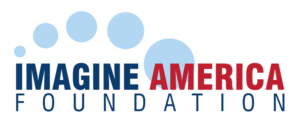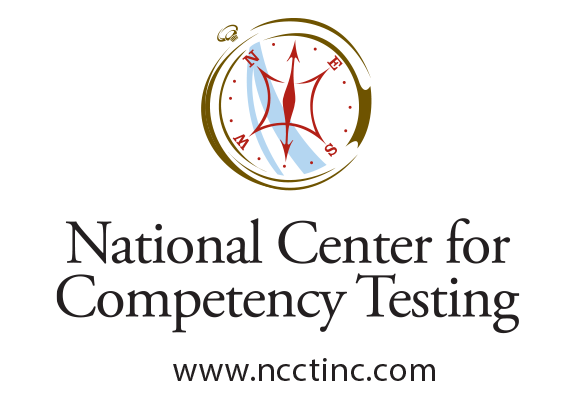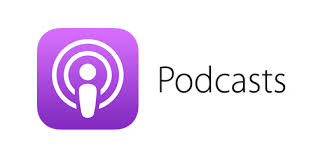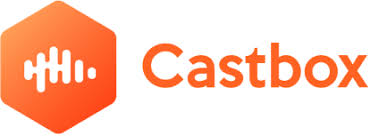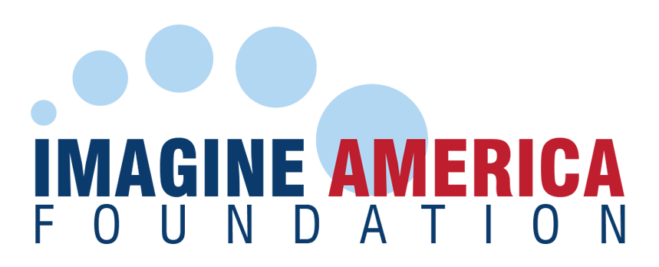MORE FROM OUR SPONSOR, NATIONAL CENTER FOR COMPETENCY TESTING (NCCT)
NCCT is a trusted provider of industry-recognized health care certifications for colleges, high schools, and health care institutions in today’s workforce.
Why?
Family owned and operated since 1989, NCCT is atop the list of certifying bodies and is dedicated to the philosophy of putting their candidates and certificants first, helping them achieve success.
As THE value leader, NCCT provides unmatched quality and affordable price points for exams, study materials, and interactive review systems, offering low recertification fees with a FREE library of CE courses for credential maintenance.
When certification matters, choose NCCT. Go to ncctinc.com to choose now.
How to choose a medical assistant program with PORTER & CHESTER INSTITUTE AND YTI CAREER INSTITUTE – SEASON 3, EPISODE 17
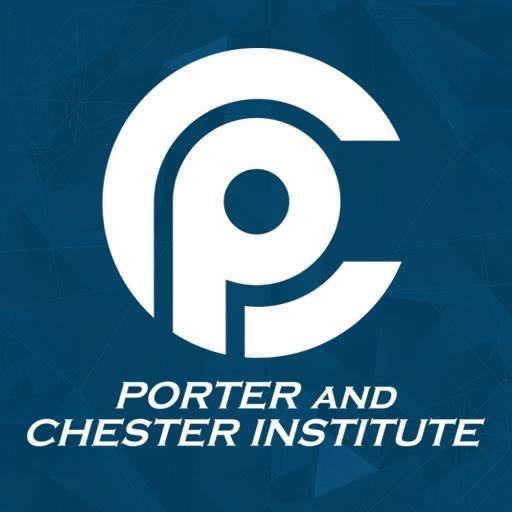
Porter & Chester Institute
Porter & Chester Institute has been training the American workforce since 1946. Schedule a virtual tour!
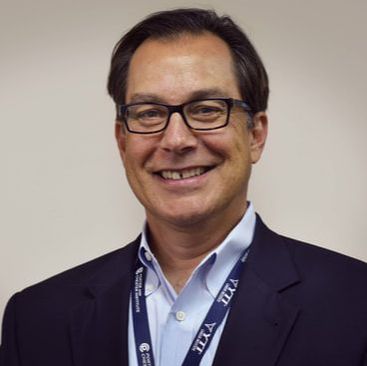
Jim bologa
Our guest on this episode of Imagine America Radio is president/CEO of Porter & Chester Institute and YTI Career Institute, Jim Bologa.

YTI Career Institute
YTI is a private postsecondary institution of higher education serving south-central Pennsylvania and northern Maryland. The Institute offers associate in specialized business and associate in specialized technology degrees, as well as programs leading to professional certifications and diplomas.
More FROM PORTER & CHESTER INSTITUTE
Read the Transcript Here
Bob Martin: Hello and welcome to today’s edition of Imagine America Radio, a service of the Imagine America Foundation. Today is the second episode in our medical career series where we will focus specifically on medical assisting careers. Joining us today is Jim Bologa, president and CEO of Porter and Chester Institute and YTI Career Institute. Porter and Chester has nine campuses, all throughout Massachusetts and Connecticut. YTI Institute is located in Altoona, Lancaster, and York, Pennsylvania. These campuses are focusing on educating tomorrow’s workforce and has been doing that since 1946 and is accredited by the Accrediting Commission of Career Schools and Colleges. Porter and Chester trains its students to enter the workforce in a number of exciting careers: medical assisting, dental assisting, medical billing and coding, practical nursing, and cosmetology programs. Additionally, Porter and Chester offers a full range of career and technology programs, including heating and HVAC, plumbing, electronics, and electrician programs and the technology sector, featuring Porter and Chester’s computer networking technician and computer-assisted drafting and design program. Jim, it’s great to have you here. |
Jim Bologa: Bob, thanks for having me. |
Bob: Talking to you about medical assisting because we’ve devoted the entire month to medical assisting careers. Couldn’t think of anybody better to talk to about this. So let’s start off, just by, if you could just explain to us a little bit about a medical assisting program. And as a leading provider, why don’t you give us a chance to tell us, what is a medical assistant doing on a daily basis? What’s their workload like? What do they need to be looking at if they’re looking at this career? |
Jim: Yeah. I mean, thanks, Bob, for the question. A medical assistant, I mean, I think there’s two aspects of medical assisting and one is around administrative functions as well as clinical functions. I think that for some folks who like more of the administrative area, they’re going to be doing what would be front office work: patient intake work, greeting patients, scheduling appointments, completing medical records, and doing a little bit of billing. And then, the folks who really enjoy more of the direct patient-care side, they’ll be more involved in the clinical aspect in terms of just onboarding patients: taking vital signs, getting the patient prepared for their meeting with a doctor, and even doing some basic lab procedures. So, it’s a profession that, I think, allows folks to do both of those—that administrative as well as that clinical exposure to patients. Or, in bigger practices, it allows that medical assistant to sort of focus on maybe more administrative, if they prefer that, or more clinical, which is really dealing directly with the patients once they move behind the medical office entry point. |
Lee Doubleday: All right, Jim. This is Lee Doubleday. I’m talking to Jim Bologa, president and CEO of Porter and Chester Institute and YTI Career Institute. So now that we have a better understanding of what a medical assistant does, let’s talk about how someone becomes a medical assistant. I’m assuming someone is going to need some training and some sort of certification in order to become employable as a medical assistant. Am I right? What does this typically look like? What does the training look like? |
Jim: Yeah, so, we have two programs. So, if you’re attending our Connecticut- and Massachusetts-based schools under the name of Porter and Chester Institute, you will enroll in our program. It’s a 10-month program, and so you would experience four 10-week terms. And the goal is to get you through the educational aspects of the administrative and clinical learning in terms of theory, as well as the practical, tangible skills that you’ll get in our industry model labs, and then you’ll cap that off generally with a relatively short externship experience. And the goal here is to have our students become a certified medical assistant. That’s what the employers are looking for, and our students are afforded that opportunity concurrent with their graduation because we’re programmatically accredited by the Accrediting Bureau of Health Education Schools, or ABHES. And that and that affords us the ability for our students to move right into that credential. We also offer an associate’s degree in our Pennsylvania schools. It’s in our New York campus—that program’s 20 months. And again, those students—they would more likely than not do some form of certification at the end of that process as well, and it would be the same sort of overall educational track they do—because it’s an associate’s degree, we’ll have to complete them, apply general education courses that are really designed around what is relevant to being a medical assistant. |
Bob: Jim, so I’m seeing in my mind a young person—could be male or female, doesn’t matter—that I guess, first prerequisite might be that they really want to get a career in health care. Might be as related to COVID, it might be something else. But what I’m struck by, listening to you is, it seems to me, a medical assistant program is like a steppingstone for a career. In other words, they come in, they get the basic training, they get a chance to go out and do some practicum, do some of that sort of work. And then all of a sudden they’re migrating up to an associate. They’re migrating up to a bachelor. Is that realistic or am I just crazy here? |
Jim: Yeah, no, I think depending on the student—I mean, our experience with folks who generally want to go into a health care profession is that there’s somebody who really—they care about people, they care about their health, in whatever shape or form that comes in. And they’re generally those individuals who truly, truly internalize trying to help people. And I think that the medical assisting program—at least our program—is an opportunity as a steppingstone so you can go into that environment. We do have some medical assistants, for example, that will do that for a few years, and then come back to us and decide that they want to then try maybe becoming a practical nurse or a licensed practical nurse. And then that sort of starts, potentially, their journey that they do that for a few years and then all of a sudden, they decide that maybe they want to become an RN. And, so, I think there is a natural progression for those folks who are truly motivated about sort of moving up, if you will, the food chain in the health care system. |
And I would say that in today’s environment, I think more and more young people are recognizing that you’re going to have to subscribe to a continuous lifelong learning journey. Maybe when we went to school, Bob, it was sort of a one-and-done kind of thing where you might have gotten a degree and that degree was sort of that entry point, and you still did some continuous learning but it wasn’t in a more formal way. And I do think, over time, what we are going to see is that there’s going to be a more flexible path for folks to move up and to continue to stay educated, just given the rate of change and the pace of change that exists in our everyday lives. It’s something that I think folks have to just think about. |
Lee: Yeah, now, Jim, that’s actually a great segue into my next question. Something that we’ve seen recently is that medical assisting can actually be taught at least somewhat online. Is it possible for someone to go to school to become a medical assistant online or in a hybrid program? And how common is that? |
Jim: Yeah, I would say COVID accelerated, I think, the hybrid concept and I think—to a certain degree—the online concept. And that’s what we’re doing. I mean, our program—both of our programs, whether they’re under the Porter and Chester Institute name or their YTI Career Institute name—those programs are delivered in a hybrid way. And they’re also delivered both asynchronously—meaning that the lectures are pre-recorded, if you will, and the information’s pre-set—as well as having synchronous or live lectures or live interactions with prospective students. And so, we’re delivering that. It’s basically a sort of shorten it up to be lecture online and industry-modeled lab work on ground and your clinical or your extensive experience on ground. And, so, I think that that’s a very viable path. One of the things that we’re finding is that students are really enjoying the flexibility of our program because what’s actually happening is they have time-of-day flexibility. So back pre-COVID, you had to be at class ay at 8 o’clock in the morning and that class went to, say, 2:50. Well, now students have the ability a couple of days a week where they’ve got that time-of-day flexibility. So let’s just say, hypothetically, you’re a single mom or a single dad and something happens with your children in the morning. Historically, when you had to sort of physically be on the campus, that created a lot of stress and anxiety. And now having the time-of-day flexibility, the way our program is designed, the student can go in there—doesn’t have to be there at 8 o’clock, but maybe at 11:00 a.m., they can go in and they can do their work and engage with the material. |
And the other thing that we’re finding is that students are enjoying the ability that if they don’t really sort of learn a concept or understand a concept—again, that physical classroom experience is gone, right? I mean, you sort of went there, it was a moment in time and now it’s gone. What we’ve done is—what we’ve heard from our students is they appreciate the fact they go back and relisten to things or reflect on things and engage in a little bit more active learning. And so, we’re finding that—I think that’s a very viable solution for folks. And again, the other thing that we’ve heard from our students is they do enjoy the fact that maybe they’re only on campus two days a week in our industry-modeled labs doing their hands-on education and training. And so that actually saves them time and money as well, versus they might have been traveling to our campus four days or five days a week. And so now, they’ve basically cut that time down by 50%. So, they have kind of extra time, and they save that money to do other things in their lives, whatever that might be. |
And so, yeah, so I think the hybrid model for us is working really well. I mean, I could see programs may be going to 100% online through the use of simulation software. But I do think that there always will be a need to have some form of direct patient care exposure. And I also think, like any one of our experiences in life, I think it’s always helpful to have that instructor or teacher or that coach who can really stand beside you and show you how to maybe inject a needle into someone’s arm or in the vein. And there’s little techniques in every profession that I think, yeah, you can pick up watching that, maybe on a video or in a live demonstration. But I also think that it also helps to sort of do it live, on ground, to really cement those tangible skills. |
Lee: Yeah, especially in the health care industry, right? I mean, it is a patient-facing industry. So having that kind of hands-on experience is great—and I think I like the way you said it, it’ like the administrative stuff is done online and the clinical stuff is done synchronous and in-person, which I’m sure your students love the flexibility, like you mentioned, if they want to get a job during those days to start paying down whatever they got to pay down. And I love the flexibility. I think it’s great. Now, let’s say I’m someone who’s interested in education in medical assisting, and I know I want to go to school for it, but I don’t know which school is going to offer me the best education. There are so many options out there. So, what are some things that students should be looking for when choosing a medical assisting program? Should the student be looking for accreditation? Maybe the length of program? I think people also want to consider maybe relationship with employers. Can you just give us a brief checklist on some things that you would be looking for in a school if you were a student considering a medical assisting program? |
Jim: I think you hit on some of the points. I mean, I think, one: is the school accredited at the institutional level? Is there a programmatic accreditation so that your you have some certification ability? And again, I think every market’s a little bit different. I mean, not all markets require a CMA certification. There are some markets that have RMAs and some other certifications as well. So, I would look into that in terms of just on the employer side. And what I would encourage folks to do is also just think about how can you best integrate school into your work life and achieve that balance? It is somewhat of a disruptive process because, again, you are going to school full time—you’re going to need to commit probably a good 30 hours a week in terms of being involved, homework, other things that you’re going to be required to have to do. And I would just look at schools that right now provide you with a flexible option. One of the things that we’re really excited about, by delivering this program in a hybrid way, is that it does give the student a tremendous degree of flexibility in their in their daily lives. And again, I think that employment is also very important. I mean, most of our students are coming to school to get the relevant theory and then practically apply that theory and develop tangible skills so that they can become employable. And I think that that’s also a very important feature to look at. |
And I would also just say, is the school making—and then this isn’t always easy to figure out—but, for example, is the enrollment process relatively easy? Can I go online and do it on my time? Or do I need to worry about having to possibly go to a campus if I’m concerned about COVID? So, I would look at flexibility overall for the student and how it best fits into their life. Because I think education is really an individual decision that a person needs to make and nobody has the same sort of fact pattern, if you will, in terms of their background or their current life situation or work situation or family situation. So yeah, I mean, I think you hit some of the key points there. But again, I would just again focus on how best can the school help me be successful? And if flexibility is something that would allow me to be able to do my studies and continue on with my life, I think that’s huge, and that’s why I’m a big proponent of the hybrid delivery method. I think it’s going to change the way students are able to get educated. |
Bob: Let me summarize this because I think it’s very important what you’ve just said, because I’m sitting back here as a host, with Lee, of this podcast, but I’m also sitting back trying to put on the head of a as a parent because very often—as you know, Jim, when they’re coming in, they’re bringing significant others, they’re touring the school, they’re meeting different people. So, I want to make sure that we’re really very clear on this, which is, I hear you say accreditation. I heard you say institutional accreditation and I hear you say programmatic accreditation—absolutely critical. The underlying factor on it is also that if you don’t have that—if the institution doesn’t have that, there isn’t going to be the likelihood of financial aid that’s going to be able to be driven to you to go to that school, right, if they’re not accredited? |
Jim: Well, yeah, at the institutional level, yeah, as long as that accreditor is recognized by the U.S. Department of Ed, you participate in the Federal Student Loan Program—the Student Aid Program, yeah. Yeah, so I think institutional accreditation is really key. I think, again, on the programmatic side, I think in certain areas, it’s important. I think depending on other areas in the country, it may not be as important. So, I think students just have to—it’s a good question to ask, and it really sort of emanates around students’ employment and employability. |
Bob: Yeah. Then I’m glad you mentioned that because then I’ve been—and I hear Lee mention relationships. I’ve been to your campuses. I’ve seen what you’ve done, and we’ve talked. We’ve had the pleasure of talking to some of your graduates. Relationships that you have with employers are absolutely critical because at some point mom or dad or that significant other is going to say, “Hey Jim, where’s Billy going to go? What’s he going to do? How am I going to pay this back, Jim?” Right? |
Jim: Yeah, yeah, no. I think right now, I mean, it’s a great time—it’s a great time to really pursue what I’ll call health care or other technical education, shorter-term technical education. I think that there is a huge demand on the employer side right now. And so, on the health care side, we don’t have enough medical assistants. We don’t have enough nurses. You look in the skilled trades area—I mean, the other interesting thing we didn’t talk about or mention in our profile, but we actually offer a respiratory therapy program that’s actually hybrid as well and the vet tech program. And those two programs right now, folks are very interested in. Obviously respiratory therapy around the COVID and running mechanical ventilators and things like that in the hospitals—that’s very, very vital. And then the vet tech, everybody’s gone out and got an animal during COVID. And so there’s now increased demand at the vet. But I would just simply say that on the employment side, there are clear paths to jobs for students pursuing a medical assisting career, along with all the other educational programs that we offer. |
Bob: Right. So, the other point being program flexibility—or overall flexibility for the student. In other words, beginning in the enrollment process, how easy is it to get information? How responsive are these schools to me? Can I get access to these people? How are they helping me with financial aid? How are we doing with the orientation? Implied in that, also, which I think you touched on a little about, is the state-of-the-art equipment. If you’re not working on—particularly in this respiratory therapy situation—if you’re not working on—an employer doesn’t want to talk to you, right? “Have you worked on the X, Y, Z?”—whatever it is—right? |
Jim: Yeah, yeah. I mean, I think it’s still a thing that I think we take great pride in is that we have program advisory committees, and we have members who are on those committees who are employers in the community that basically look at our curriculum and really help determine its relevancy in the workforce and in the workplace. That’s part of who we are as an institution, and we’re constantly looking at trying to get better each and every day. And so, again, I think that the overall model of operation that we have, I think, is very conducive for folks basically learning the theory, then practically applying the theory, developing repeatable, sustainable, tangible skills that they can then use, day one, when they go out and get employed. |
Bob: Gotcha. Before we conclude this thing and I do the wrap-up—do you want to give some contact information now? If someone listens to this pithy presentation you have and wants to get ahold of you, how do they do that? Where do they go? |
Jim: Yeah, I mean, if students are listening to this or their families are listening to it, I would just encourage them to go to www.porterchester.edu if you’re interested in programs in Connecticut or Massachusetts. And if they’re interested in our programs that are offered out at YTI Career Institute, go into www.yti.edu. And I will say that some of our programs—like medical billing and coding is now completely online. So, we didn’t really talk much about that. But that program we took online from a 100% residential program to a 100% online program, and we are actually seeing a lot of interest, not—it’s offered through our Lancaster PA campus, but we’re actually seeing a lot of interest outside of Pennsylvania for that program because it’s online. And we have moved some of our traditionally based programs, like computer-aided drafting design—that used to be 100% residential that’s now online. And we’ve done the same thing with computer and network technology and computer data management. So, we are trying to innovate the educational delivery of programs, again, not only in medical assisting but in other areas as well. |
Bob: A great episode of Imagine America Radio and our second in our medical assisting careers program—in our Medical Assistants Career Services Month. We want to thank you, Jim, for joining us today. Jim is the president and CEO of Porter & Chester and YTI Career Institutes. We hope that you found this podcast useful. And on behalf of my colleague, Lee Doubleday, and myself, we hope you have a great day. Goodbye. |
More Episodes
subscribe where you listen
COPYRIGHT IMAGINE AMERICA PUBLISHING 2021 ALL RIGHTS RESERVED PRIVACY POLICY
